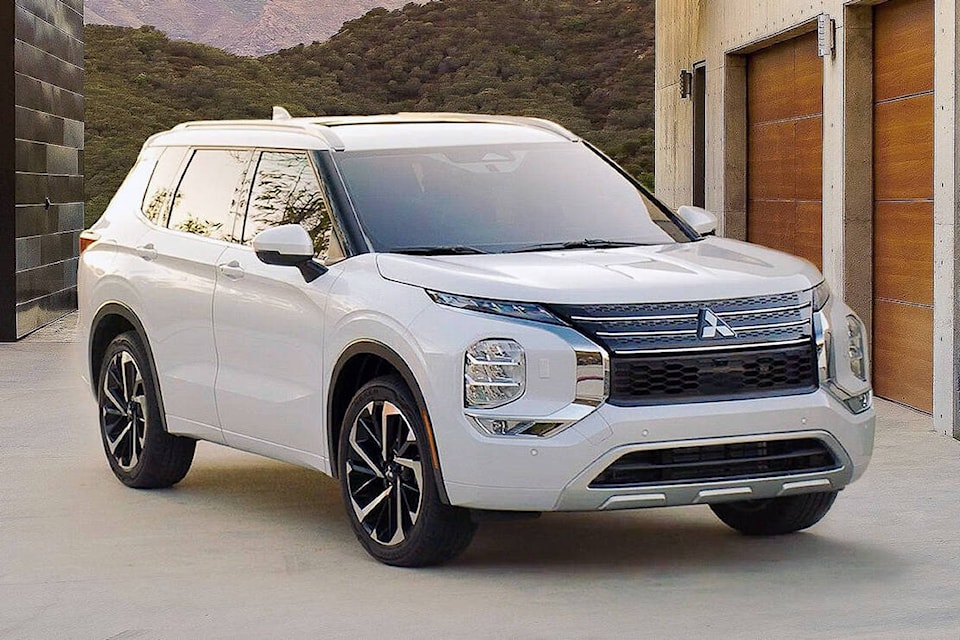ŌĆ£I get by with a little help from my friends,ŌĆØ is a line from a classic Beatles song. It could also apply to Mitsubishi ŌĆö a member of the Renault-Nissan-Mitsubishi alliance ŌĆö that uses the Nissan Rogue framework for the 2022 Outlander.
Sharing has its benefits, such as spreading development costs over a wider customer base. The trick is to create different enough identities for the Rogue and the Outlander so that thereŌĆÖs reason to buy one or the other, whether it comes down to style or capability or brand loyalty.
The new Outlander mostly succeeds on this front with touches that make it look like a Mitsubishi.
Compared with the outgoing Outlander, the new model is slightly longer, five centimetres wider and four centimetres taller. The wheelbase ŌĆö the distance between the centrelines of the front and rear wheels ŌĆö increases 3.5 centimetres. Most of these dimensions are identical or closely similar to the RogueŌĆÖs.
ThatŌĆÖs only part of the story, though. The new OutlanderŌĆÖs rugged presence is far superior to the previous versionŌĆÖs somewhat dated design. The front end is also more massive looking than the RogueŌĆÖs, especially the grille and headlight surrounds. The rest of the bodywork differs slightly from the NissanŌĆÖs.
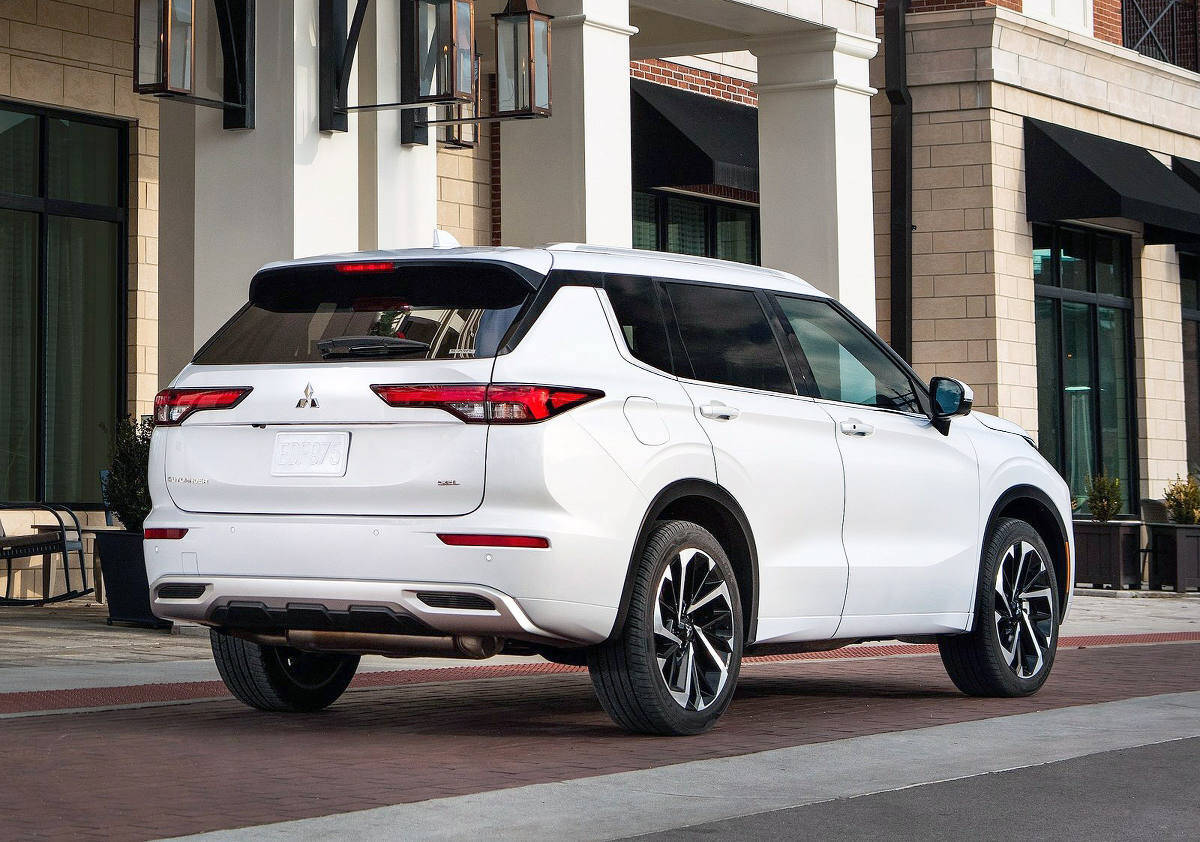
The OutlanderŌĆÖs interior also differs in seating capacity. As before ŌĆö and unlike the Rogue ŌĆö a two-person third row is standard, although the tight quarters means itŌĆÖs best for occasional use or small children. Both second- and third-row seats are split folding, which allows you to configure a variety of passenger and cargo arrangements. Front-row folks get a lovely dashboard and control panel thatŌĆÖs fronted by a dominant touch-screen.
The Outlander uses a nearly identical 2.5-litre four-cylinder engine to the Rogue that makes 181 horsepower and 181 pound-feet of torque. For the Outlander, thatŌĆÖs a nice little bump over the previous base four-cylinder that produced 166 horsepower and 162 pound-feet. The previously optional 3.0-litre V-6 with 224 horses and 215 pound-feet has been put out to pasture.
The 2.5 is reasonably muscular and somewhat growly under hard acceleration, however it provides just 2,000 pounds (910 kg) of towing capacity compared with 3,500 pounds (1,590 kg) for the outgoing V-6-powered model.
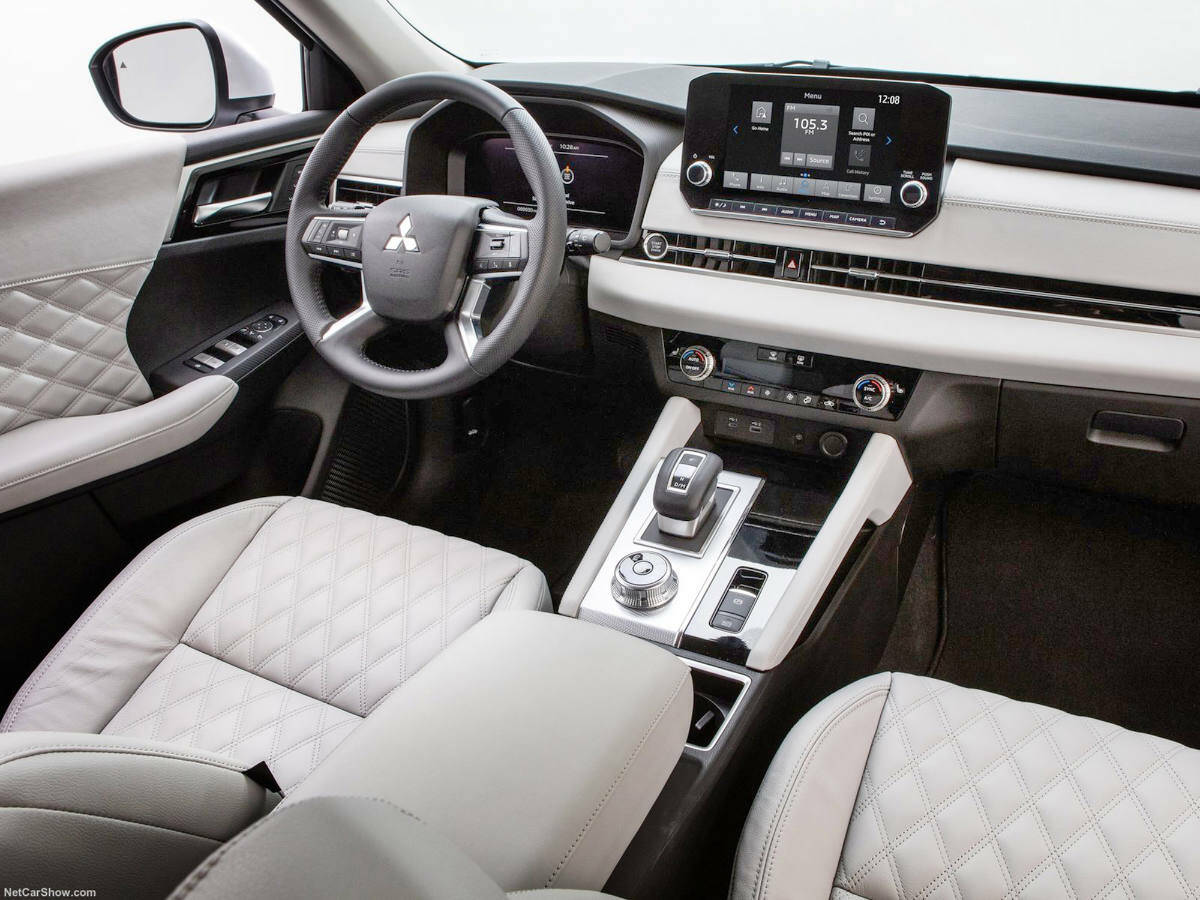
The OutlanderŌĆÖs continuously variable transmission comes with eight built-in steps that somewhat copies a conventional geared automatic. All-wheel-drive is standard for all trims.
Fuel consumption is rated at 9.7 l/100 km in the city, 7.9 on the highway and 8.9 combined. ThatŌĆÖs slightly higher than the RogueŌĆÖs 9.2/7.2/8.3 numbers (with AWD). The Nissan is a bit lighter, which might account for some of the difference.
All Outlander models come with Eco, Normal, Tarmac (pavement), Gravel, Snow and Mud settings that vary the engine, transmission and steering programming.
The base ES ŌĆö one of five different variants ŌĆö lists for $33,900, including destination fees. Included in the price is dual-zone climate control, six-speaker audio system, 8.0-inch display plus a number of active-safety technologies such as blind-spot warning and rear cross-traffic alert that assists when backing up.
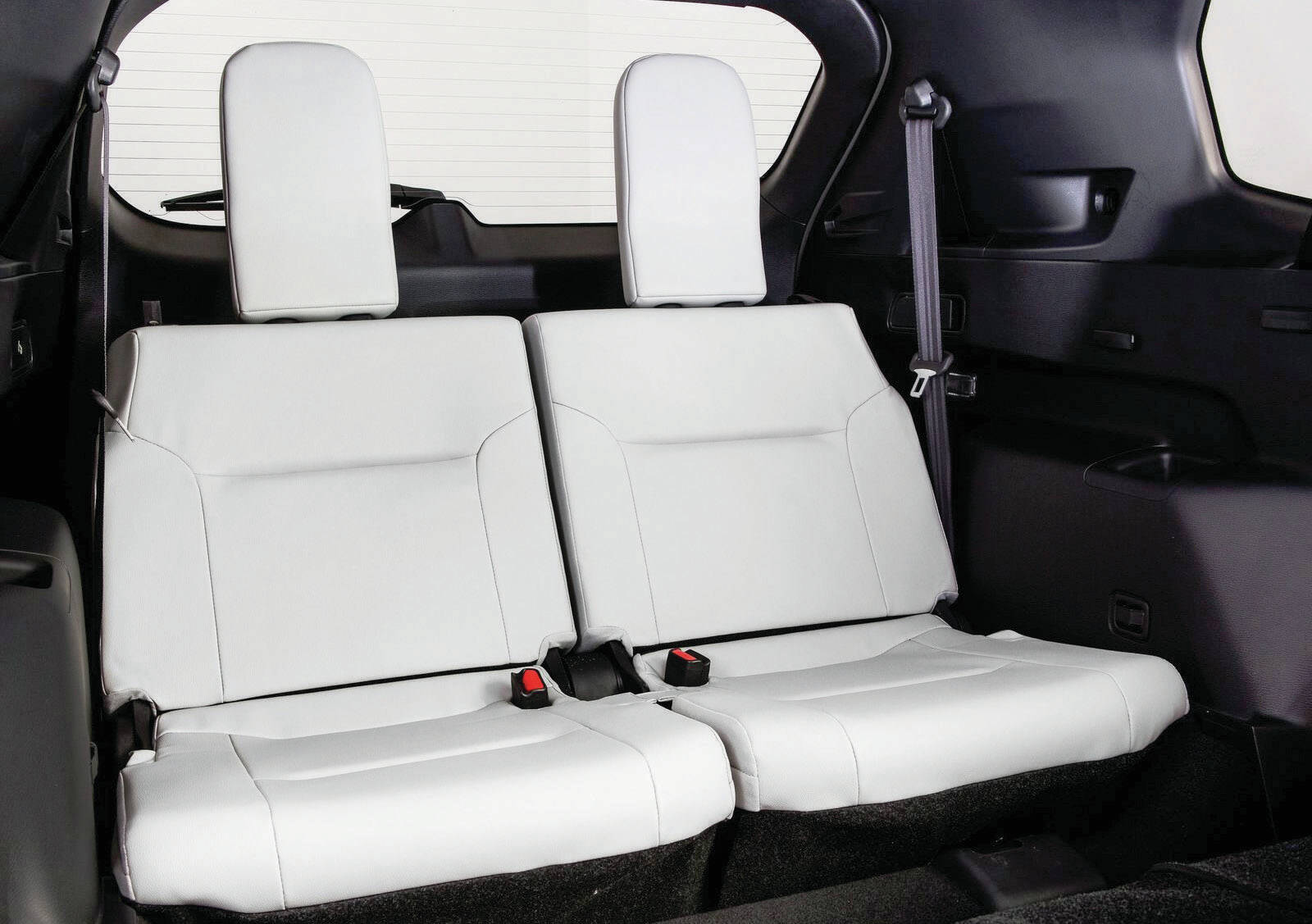
Depending on the trim, the rest of the field comes with items such as a power-adjustable driverŌĆÖs seat, heated front seats, 9.0-inch touch-screen with navigation, and a multi-view camera.
The range-topping GT ($45,100) comes with tri-zone climate control, quilted leather seat covers, a power-adjustable passenger seat and a 12.3-inch digital driverŌĆÖs information display.
By mid-2022, Mitsubishi says it will launch a new Outlander PHEV (plug-in hybrid) with added power and electric range than the current carryover version.
The bolder-looking Outlander is a significant improvement from the previous model in nearly every respect, although ride quality over bumps and broken pavement is a bit jarring and the transmission allows the engine to feel like itŌĆÖs free-wheeling under hard acceleration. But the redesign is the kind of jolt the nameplate needs to compete with the categoryŌĆÖs heavy-hitters, including the Rogue.
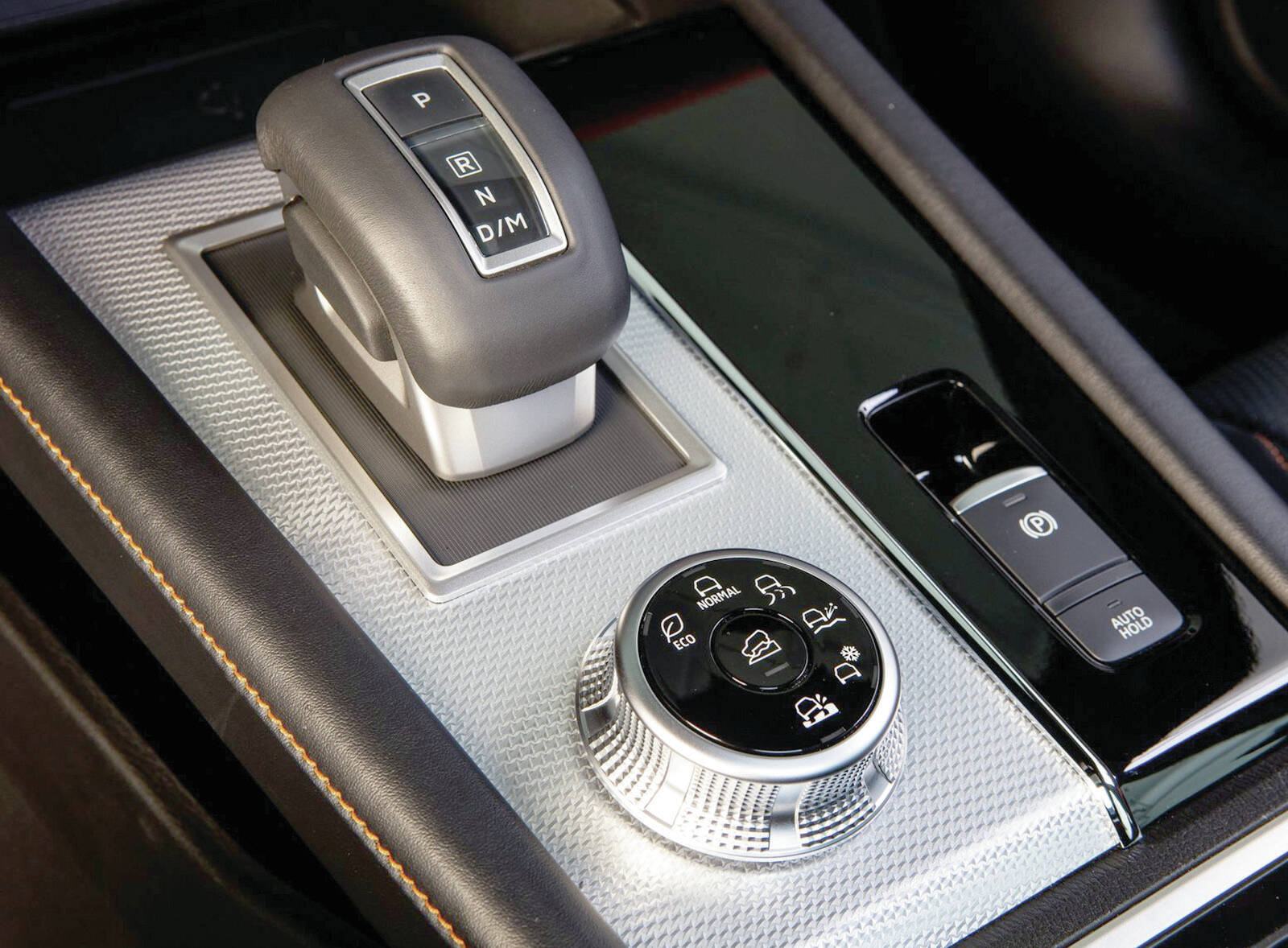
What you should know: 2022 Mitsubishi Outlander
Type: All-wheel-drive midsize utility vehicle
Engine (h.p.): 2.5-litre I-4 (181)
Transmission: Continuously variable (CVT)
Market position: The first Mitsubishi vehicle thatŌĆÖs a product of the Renault alliance does an admirable job of separating itself from the Nissan Rogue, which is on a shared platform. Thus the Outlander becomes a segment contender.
Points: New styling somewhat resembles the Nissan RogueŌĆÖs, only bolder. ŌĆó Interior is more premium-looking, especially the higher trim levels. ŌĆó The plug-in hybrid version is expected by mid-2022. ŌĆó The four-cylinder engine is competitive in this class. ŌĆó Third-row seat is not suitable for adults or larger children; thereŌĆÖs just not enough room.
Driver assist: Blind-spot warning with cross-traffic backup alert (std.); active cruise control (opt.); front and rear emergency braking (std.); driver-attention alert (std.); lane-departure warning (std.); pedestrian detection (std.)
L/100 km (city/hwy): 9.7/7.9
Base price (incl. destination): $33,900
BY COMPARISON
Honda CR-V
- Base price: $32,700
- Cabin has plenty of room for five. Standard turbo I-4 makes 190 h.p. AWD is opt.
Volkswagen Tiguan
- Base price: $35,150
- One of the larger models in its class has 184 hp. AWD, third-row seat are optional.
Toyota RAV-4
- Base price: $30,800
- Standard 203-hp I-4. Two hybrids, including a plug-in, are available. AWD is opt.
ŌĆō written by Malcom Gunn, Managing Partner at Wheelbase Media
If youŌĆÖre interested in new or used vehicles, be sure to visit to find your dream car today! Like us on and follow us on
